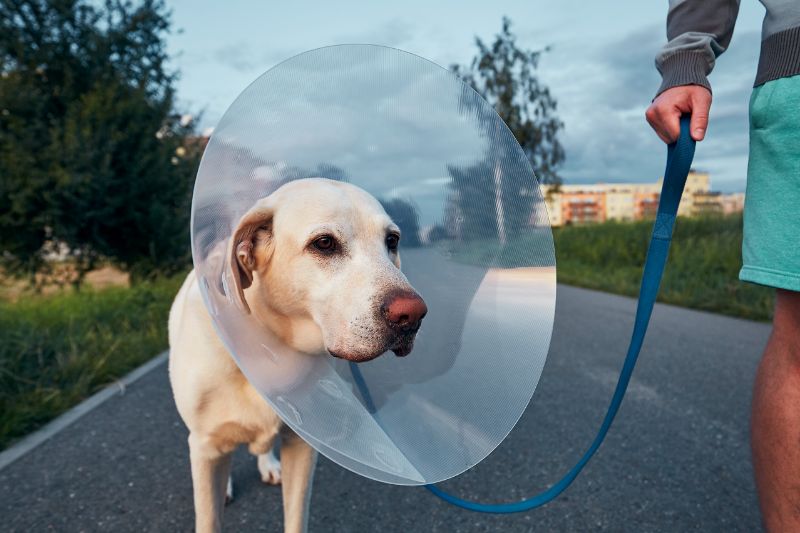
A question we often field from owners whose pets have recently had surgery, is whether or not it’s safe for their pets to exercise.
After a surgical procedure, many pet owners feel some trepidation about allowing their pet to exercise, and rightly so; but some activity is necessary for a successful recovery.
Exercising your pet after surgery, while using caution and maintaining a slow progression, can be advantageous as your pet heals from any surgery.
Follow Post-Operative Instructions
After your pet has surgery, the veterinary team at Clairmont Animal Hospital will give you instructions regarding their diet, if they need to be immobilized (and for how long), the dosage and timing of administering meds, and what kinds of activity they can safely do. Your veterinary surgeon knows best when it comes to the correct ways for your pet to recover at home, so it’s critical to follow these instructions.
When in doubt or if anything is unclear, please ask. Your pet’s rapid and successful healing is our absolute priority.
Gentle Post-Op Pet Exercise
There are gentle forms of post-surgical pet exercise and stretches that typically are recommended for recovery. These can include passive range of motion exercises to strengthen the joints and muscles, as well as short and slow walks around the house or yard (especially for elimination). Over-exertion should be avoided since this can set your pet’s recovery back and may end up in additional injuries.
Range of motion exercises are therapeutic in nature and should be learned under the supervision of a professional. These motions include having your pet climb up stairs, move their limbs in a circular motion, bow, sit and stand, and so on. Your vet may also suggest walking on an underwater treadmill or low impact swimming, though these will typically be performed by a certified veterinary physical therapist.
Post-Op Entertainment and Enrichment for Your Pet
After a surgery, your pet will be restricted to what forms of movement they can do. Unfortunately, this leads to frustration for a pet, especially those who are used to more energetic play. To keep your pet mentally active, give them things they can do.
We recommend:
- Licky mats – These feeders are perfect for pets who love to lick. Just spread a bit of wet food, peanut butter, or plain yogurt on the mat and they will be happy. You can also stick many of these to walls as an incentive to stand (and stay!)
- Treat dispensing puzzles – Another favorite, these puzzles contain a few bits of kibble or small treats. Your pet will have to “solve” the puzzles in order to get the tasty reward.
- Kong toys – Kongs can be filled with prepared Kong filling, peanut butter, smooshed banana, or any other healthy snack. For a longer lasting challenge, you can freeze them.
- Flavored Nylabones – If you don’t want your pet to pack on the pounds, try a flavored chew that is inedible, but still gives them the enjoyment of chewing.
- Squeaky toys – While the sound may not be our favorite, your pet will love to play with these noisy, yet fun toys.
- Plush toys – For some pets, these plush “babies” can be soothing and ease some of the anxiety of recovering from a surgery.
How to Safely Exercise Your Pet After Surgery
If you have additional questions about your pet’s recovery, please contact us. Your pet will need ample time to rest, but movement and mental enrichment are great for physical and behavioral health. We can get your pet started back on the right paw with some tips on safely exercising your pet after surgery.

